- News
- Reviews
- Bikes
- Accessories
- Accessories - misc
- Computer mounts
- Bags
- Bar ends
- Bike bags & cases
- Bottle cages
- Bottles
- Cameras
- Car racks
- Child seats
- Computers
- Glasses
- GPS units
- Helmets
- Lights - front
- Lights - rear
- Lights - sets
- Locks
- Mirrors
- Mudguards
- Racks
- Pumps & CO2 inflators
- Puncture kits
- Reflectives
- Smart watches
- Stands and racks
- Trailers
- Clothing
- Components
- Bar tape & grips
- Bottom brackets
- Brake & gear cables
- Brake & STI levers
- Brake pads & spares
- Brakes
- Cassettes & freewheels
- Chains
- Chainsets & chainrings
- Derailleurs - front
- Derailleurs - rear
- Forks
- Gear levers & shifters
- Groupsets
- Handlebars & extensions
- Headsets
- Hubs
- Inner tubes
- Pedals
- Quick releases & skewers
- Saddles
- Seatposts
- Stems
- Wheels
- Tyres
- Health, fitness and nutrition
- Tools and workshop
- Miscellaneous
- Tubeless valves
- Buyers Guides
- Features
- Forum
- Recommends
- Podcast
review
£999.99
VERDICT:
Excellent entry-level cyclo-cross race bike that's versatile enough for commuting, adventure riding and more
Weight:
9,450g
Contact:
At road.cc every product is thoroughly tested for as long as it takes to get a proper insight into how well it works. Our reviewers are experienced cyclists that we trust to be objective. While we strive to ensure that opinions expressed are backed up by facts, reviews are by their nature an informed opinion, not a definitive verdict. We don't intentionally try to break anything (except locks) but we do try to look for weak points in any design. The overall score is not just an average of the other scores: it reflects both a product's function and value – with value determined by how a product compares with items of similar spec, quality, and price.
What the road.cc scores meanGood scores are more common than bad, because fortunately good products are more common than bad.
- Exceptional
- Excellent
- Very Good
- Good
- Quite good
- Average
- Not so good
- Poor
- Bad
- Appalling
Vitus has nailed this one. The Energie VR is an excellent tool for thrashing round in the mud for an hour on a Sunday, and it's versatile enough for more general riding. The drivetrain is excellent, it's tubeless-ready out of the box and it looks great. For the money, it's hard to fault.
'The Energie VR can be used as a cyclo-cross race bike, a hardcore winter training bike or all season commuter. It's your one bike for all occasions', says Vitus. It's built around a 6061-T6 triple-butted hydroformed aluminium alloy frame that's mated to a full carbon fork, and both of those are tidily built and finished in a neon green that makes it pretty easy to pick yourself out in the race gallery. The bike has mounts for a rack and full mudguards and two sets of bottle bosses, so it's properly versatile if you want to run it as a winter bike/adventure bike/tourer.
Geometry-wise it's reasonably aggressive but certainly not twitchy. The general trend with 'cross bikes over the past few years has been towards a slacker steering angle and slightly longer wheelbase, which makes them much better as general purpose bikes. This Vitus is a good example of that: the 71-degree head angle gives the 58cm test bike a 106.3cm wheelbase, so it's longer and slacker than a fully race-oriented bike that would use a 72-72.5-degree head angle. A bike like that would be a bit faster in the turn and shorter too; that can be an advantage in a tight section of a cyclo-cross course but also makes the bike a bit nervous for general riding.
The Vitus is a good middle ground geometry. It rarely feels compromised in a race and when you're just out riding it's well behaved and easy to ride. The stiff front end (1 1/2in crown race, full carbon fork, thru-axle) gives it a plenty of predictability and the steering response is precise. If you're a podium-botherer then you'll be looking for something a bit lighter and flightier for maximum race response, but if 'cross is something you do for a laugh and to keep fit in the winter, it's more or less perfect.
HRD it's good
The Energie comes with a full SRAM Apex 1 HRD groupset. It's the first bike I've had with the new Apex on, and I have to say I'm seriously impressed.
SRAM started the road-single-chainring ball rolling with Force CX1, which was a specific 'cross groupset. Since then the range of 1x systems you can buy has expanded enormously, with anything up to a crit race bike ditching the front mech. Sometimes switching to a single ring feels like a bit of a compromise, but for mid-table 'cross racing, Apex 1 is the perfect groupset.
What do you want from a 'cross groupset? You want it to be simple to use and functional, and you want it to keep working even when half the field are trudging back to the sign-on tent with their rear mechs hanging off. This bike has the cleanest-running transmission in any conditions that I've ever tried. It's really impressive.
Why does it work so well? It's down to a number of factors. The single chainring doesn't have anywhere to store mud and clag like a double does between the rings, and there's no front mech to catch the mud and smear it onto the chain. The amount of mud clearance around the bottom bracket is really good too, so you don't get mud building up there and transferring to the chain.
At the back the rear mech still picks up plenty of crap from the course, but continues to work well even when it's full of grass and muck. That's partly down to the huge jockey wheels, which give a better contact with the chain, and partly down to the heavy spring and clutch mechanism which keep the chain taut and the shifting accurate even when conditions are challenging. The bottom line is that if you're going to get it muddy, it's as good functionally as any groupset I've tried.
You can run up to a 42T sprocket with the Apex rear derailleur but this bike comes specced with an 11-36T cassette and a 40T chainring. That's what I run on my Kinesis Tripster for general road duties and it's plenty of gears for everything except pedalling fast down hills. It's a very sensible setup for a bike like this: if you were going to tackle serious off-road climbs or fit a rack and go touring you'd find it overgeared, but for racing and general riding you don't need the range of the wider cassette, and in a race the jumps between ratios would be a bit big for efficient riding. So really, it's spot on.
SRAM's HRD levers are pretty big: I get on with them fine with my shovel-like hands but they may not suit if you're shorter of digit. The single shift lever on the right-hand unit is easy to locate and shifts are crisp and accurate, if a little industrial at times; I'd rather it clunked and worked than clicked and didn't, though, and in the grot the heavier shift and more noticeable feedback is welcome.
The levers push hydraulic disc brakes at the front (160mm rotor) and rear (140mm) and they're post-mount rather than flat-mount, if not being up with the very latest standard bothers you. I find post-mount brakes easier to adjust and just as good in every other way, so it's not an issue for me. The brakes are excellent, offering masses of predictable stopping power in all conditions, like good hydraulic discs do.
Wheel deal
Wheel-wise you do well here, for the money. Novatec supplies the hubs for the Energie and they're laced to WTB Frequency CX Team i19 rims, which are tubeless-compatible.
The kevlar-bead WTB Cross Wolf tyres are a perfect match for the rims and easy to seal for tubeless running, which is certainly something you'll want to do if the bike is going anywhere near proper off-road or a CX race. Tubeless means you can run lower pressures without risking a pinch flat and the tyres give better grip and are more comfortable. The WTB tyres at 32mm aren't wide but they're decent all-rounders and even cope reasonably well with sticky mud in spite of their fairly shallow tread.
The wheels aren't light, but on a £999 bike they're pretty much as good as you can hope for. I didn't feel the need to swap them out for the sort of racing I do (very average racing), but if you did want to bling the Energie up they'd be one of the first things you'd consider swapping out.
> Cyclo-cross bikes vs adventure/gravel bikes: what's the difference?
Other things you might have a go at, to shave a bit off the bike's 9.45kg weight, would be the Vitus own-brand seatpost and bar. Speccing a carbon seatpost would probably give you a comfort boost at the rear too; the bike is pretty stiff in the frame and fork so the main shock absorbing is done by the tyres, seatpost and handlebar. Beyond that you'd be looking at upgrading the groupset to something lighter, but I'd be loath to do that until it was on its last legs because it works so well.
Overall, the Vitus Energie is a compelling package: less than a grand for a tubeless-ready, race-ready CX race bike with a super-reliable drivetrain. It's versatile enough to turn its hand to adventure riding, winter training or commuting and built with those things in mind too. For the money it's hard to fault.
And if you're looking to buy one then it pays to sign up as a British Cycling member: a £21 fan membership will get you £100 off the bike at Chain Reaction.
Verdict
Excellent entry-level cyclo-cross race bike that's versatile enough for commuting, adventure riding and more
road.cc test report
Make and model: Vitus Energie
Size tested: 58cm
About the bike
State the frame and fork material and method of construction. List the components used to build up the bike.
Frame 6061-T6 Alloy
Forks High-modulus T700 HM-UD full carbon
Shock n/a
Chainset SRAM S350-1, X-SYNC
Bottom Bracket SRAM GXP (BSA)
Shifters SRAM Apex 1 HRD
Front Derailleur N/A
Rear Derailleur SRAM Apex 1
Cassette SRAM PG1130
Chain SRAM PC1110
Rims Tubeless-Ready WTB Frequency CX Team i19, TCS
Front Hub Novatec D811SB-15
Rear Hub Novatec D142SBT
Spokes Double butted stainless
Tyres Tubeless-Ready WTB Cross Wolf, TCS DNA dual compound, UST aramid bead
Front Brake SRAM Apex HRD
Rear Brake SRAM Apex HRD
Handlebars Vitus compact
Stem Vitus
Headset Token A38M integrated
Saddle Vitus
Seatpost Vitus
Seatclamp Vitus bolt
Weight 9.22kg/20.32lbs (size 52cm)
Tell us what the bike is for, and who it's aimed at. What do the manufacturers say about it? How does that compare to your own feelings about the bike?
The Vitus Energie; cyclocross race bike; hardcore winter training bike or all season commuter; your one bike for all occasions.
Cyclocross was once the sole preserve of hardened racers who wanted to maintain the competitive edge throughout the winter months but in recent years the sport has exploded into the mainstream with races cropping up every weekend throughout Europe and the UK alike.
The Energie features a tough 6061-T6 alloy frame with a full carbon fork with a tapered carbon steerer and 15mm through axle configuration for improved tracking; a 27.2 seatpost for added comfort and revised geometry – providing a longer top tube and shorter stem combination to improve handling.
The Energie comes equipped with a race ready single ring set up built around the SRAM Apex 1 Hydro groupset which combines a wide ratio cassette with a single ring X-SYNC 40t chainring; Apex hydraulic disc brakes; a Tubeless-Ready WTB Frequency CX Team/Novatec wheelset and Vitus finishing kit to complete the package.
6061-T6 Alloy Frame & HM-UD Carbon Fork With Tapered Carbon Steerer & 15mm Through Axle
Our cyclocross specific frameset features a 6061-T6 alloy tubeset with increased tyre and mud clearance for high volume cyclocross tyres. Cable routing has been specifically designed to prevent ingress of mud and water and to increase comfort when shouldering the bike during cyclocross race situations. The High-Modulus T700 HM-UD full carbon fork features a tapered carbon steerer and beefed-up blades with 15mm through axle configuration to ensure precise tracking and steering with the ability to handle the rigours of competitive cyclocross racing.
Bottle cage mounts have been added along with mudguard and pannier mounts to expand the potential for all year multi-purpose use.
Frame and fork
Overall rating for frame and fork
8/10
Tell us about the build quality and finish of the frame and fork?
Tidily finished, nice neon paint job.
Tell us about the materials used in the frame and fork?
Frame 6061-T6 Alloy
Forks High-modulus T700 HM-UD full carbon
Tell us about the geometry of the frame and fork?
58cm, 59cm ETT, 58.9cm Stack, 41,9cm Reach, 74° Seat Tube Angle, 71° Head tube Angle
How was the bike in terms of height and reach? How did it compare to other bikes of the same stated size?
Fine, fitted me well.
Riding the bike
Was the bike comfortable to ride? Tell us how you felt about the ride quality.
It's a firm bike and most of the give is in the tyres.
Did the bike feel stiff in the right places? Did any part of the bike feel too stiff or too flexible?
Yes, it was nice and stiff.
How did the bike transfer power? Did it feel efficient?
Very efficient in all conditions.
Was there any toe-clip overlap with the front wheel? If so, was it a problem?
None.
How would you describe the steering? Was it lively, neutral or unresponsive? Neutral, slower than a true CX race bike.
Tell us some more about the handling. How did the bike feel overall? Did it do particular things well or badly?
The bike is confident and precise in the turn but the 71° head tube angle means it's not quite as quick through the tight stuff.
Rate the bike for efficiency of power transfer:
9/10
Rate the bike for acceleration:
7/10
Rate the bike for sprinting:
6/10
Rate the bike for high speed stability:
8/10
Rate the bike for cruising speed stability:
10/10
Rate the bike for low speed stability:
10/10
Rate the bike for flat cornering:
8/10
Rate the bike for cornering on descents:
8/10
Rate the bike for climbing:
7/10
The drivetrain
Rate the drivetrain for performance:
10/10
Rate the drivetrain for durability:
8/10
Rate the drivetrain for weight:
7/10
Rate the drivetrain for value:
8/10
Tell us some more about the drivetrain. Anything you particularly did or didn't like? Any components which didn't work well together?
Apex 1 HRD is about the best all-conditions groupset I've tried, running faultlessly even when jammed with grot.
Wheels and tyres
Rate the wheels for performance:
8/10
Rate the wheels for durability:
9/10
Rate the wheels for weight:
6/10
Rate the wheels for comfort:
7/10
Rate the wheels for value:
8/10
Tell us some more about the wheels.Did they work well in the conditions you encountered? Would you change the wheels? If so, what for?
Good tubeless-ready system, plenty capable enough for non-serious racing.
Rate the tyres for performance:
7/10
Rate the tyres for durability:
7/10
Rate the tyres for weight:
7/10
Rate the tyres for comfort:
7/10
Rate the tyres for value:
7/10
Tell us some more about the tyres. Did they work well in the conditions you encountered? Would you change the tyres? If so, what for?
The tyres are pretty good all-rounders. I would have preferred something a bit bigger and more aggressive.
Controls
Rate the controls for performance:
8/10
Rate the controls for durability:
9/10
Rate the controls for weight:
6/10
Rate the controls for comfort:
7/10
Rate the controls for value:
8/10
Tell us some more about the controls. Any particularly good or bad components? How would the controls work for larger or smaller riders?
All pretty good, serviceable stuff. Saddle is decent, bar tape is good, bar and seatpost fine but pretty heavy.
Your summary
Did you enjoy riding the bike? Yes
Would you consider buying the bike? Yes
Would you recommend the bike to a friend? Yes
Rate the bike overall for performance:
8/10
Rate the bike overall for value:
10/10
Use this box to explain your score
The bike is a really good performer in all conditions and versatile enough to be put to use as a racer, commuter or adventure bike. For the money, it's hard to fault.
About the tester
Age: 43
I usually ride: whatever I'm testing... My best bike is: Kinesis Tripster ATR, Kinesis Aithein
I've been riding for: Over 20 years I ride: Every day I would class myself as: Experienced
I regularly do the following types of riding: road racing, time trialling, cyclo-cross, commuting, club rides, sportives, general fitness riding, fixed/singlespeed, mountain biking, Mountain Bike Bog Snorkelling, track
Dave is a founding father of road.cc, having previously worked on Cycling Plus and What Mountain Bike magazines back in the day. He also writes about e-bikes for our sister publication ebiketips. He's won three mountain bike bog snorkelling World Championships, and races at the back of the third cats.
Latest Comments
- panda 8 min 22 sec ago
If someone were to do a meaningful analysis to derive some better criteria for "dangerous - repair immediately" taking into account all road users...
- chrisonabike 27 min 10 sec ago
{insert suitable image of gnome with fishing rod}
- mark1a 27 min 33 sec ago
In this case, one is paying for the K-Edge brand name, not Garmin.
- chrisonabike 55 min 15 sec ago
I mean - if you let their tyres down that's compromising their safety - attempted murder....
- qwerty360 1 hour 4 min ago
Except there is legislation re what PSPO's can be used for....
- rct 1 hour 11 min ago
Local residents? It's in the middle of a massive industrial zone. What would cause carnage would be if the oil terminal next door blew up... ...
- Gareth W-R 1 hour 33 min ago
I had one of these years ago, emx 5 was just under the top tier emx 7. This was a pro tour frame, used by boonen from what I remember along with the 7
- rhodzilla 2 hours 23 min ago
Yeah, I've looked at a few others but they seem a bit complicated - what I like about this game is that the team selection is straightforward and...
- stonojnr 2 hours 33 min ago
People willingly drive up kerbs that are 15-20cm high, they don't care about what speed bumps might do to their vehicles at speed, even before half...
- antonae 2 hours 52 min ago
My experience is the same as Rostrider, in the line of what Matt insinuates about the Zero Road grip on wet conditions: a fatal disaster, hard to...




























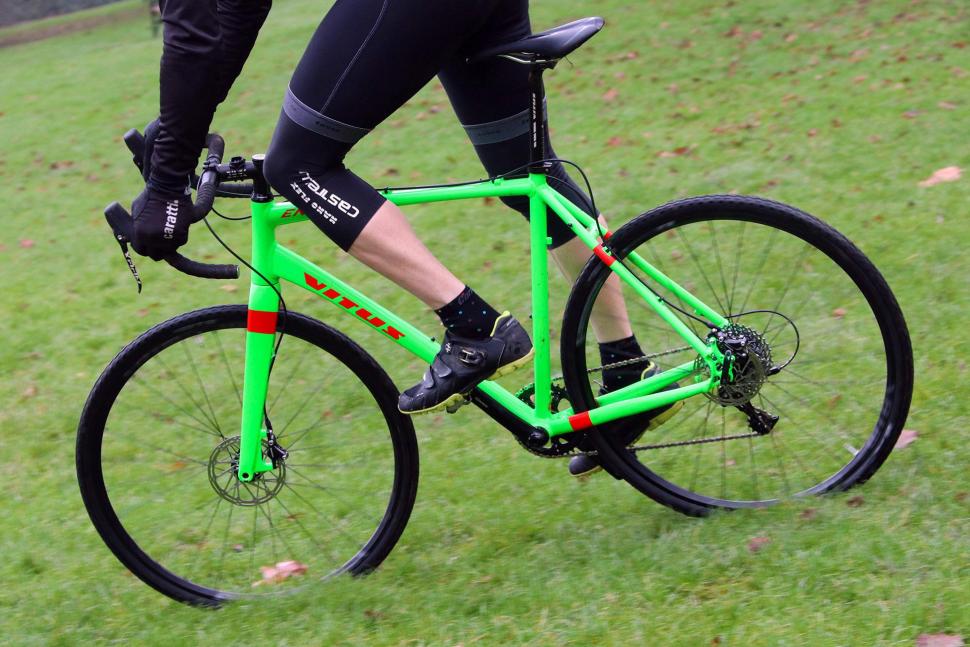
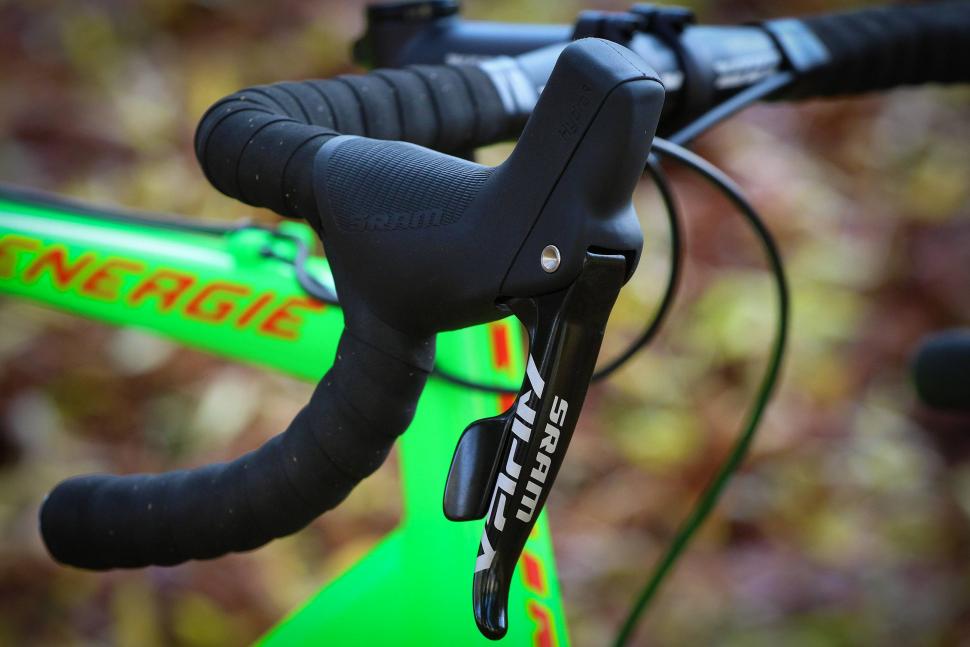
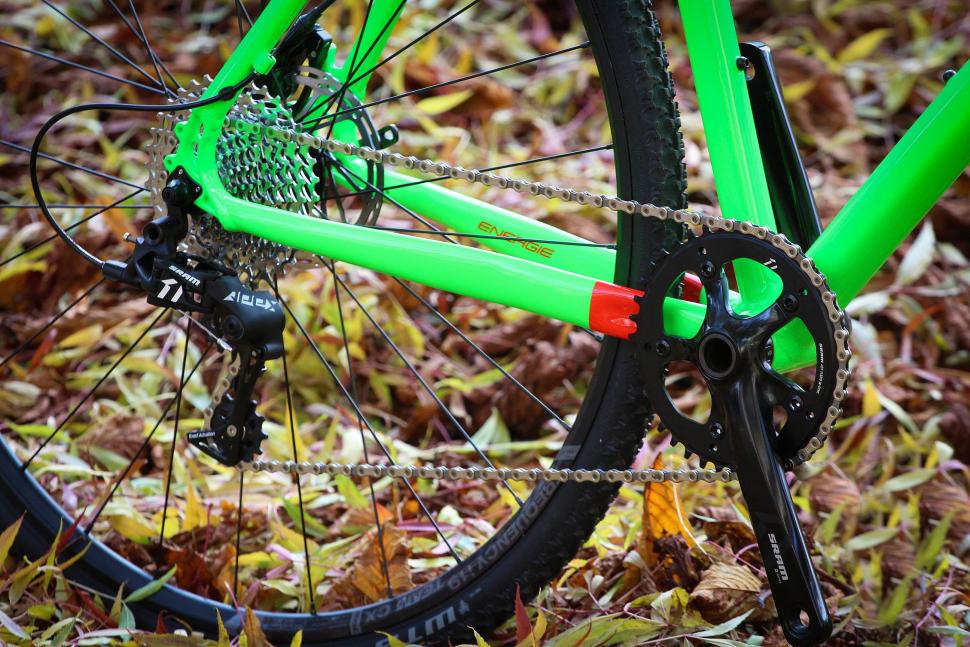
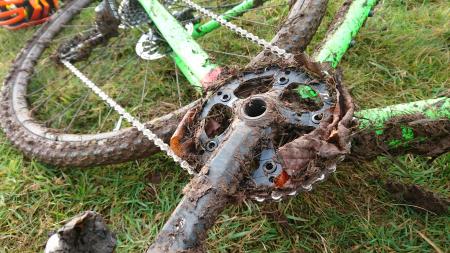


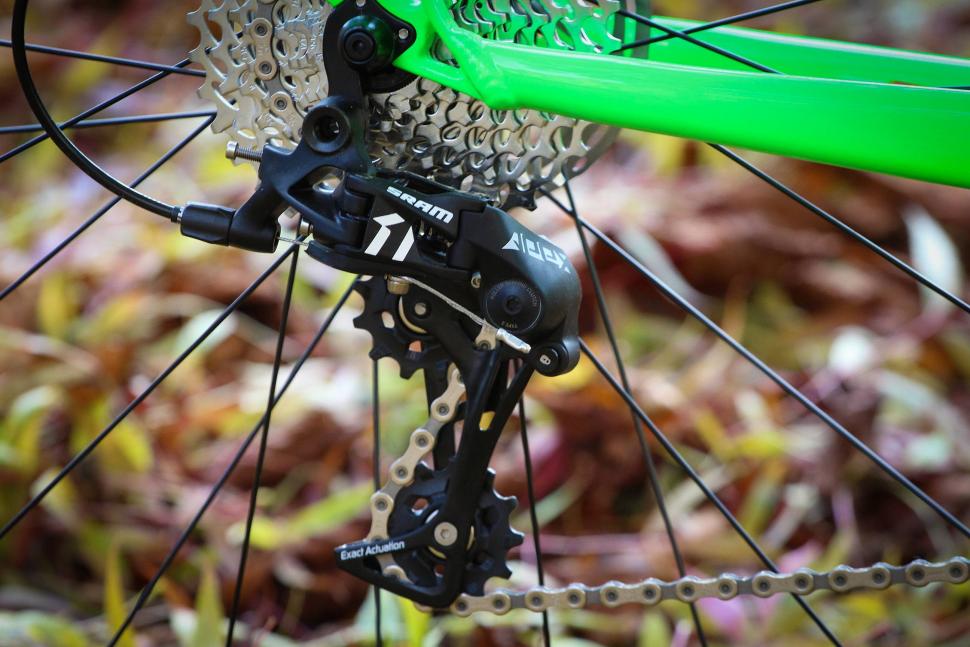
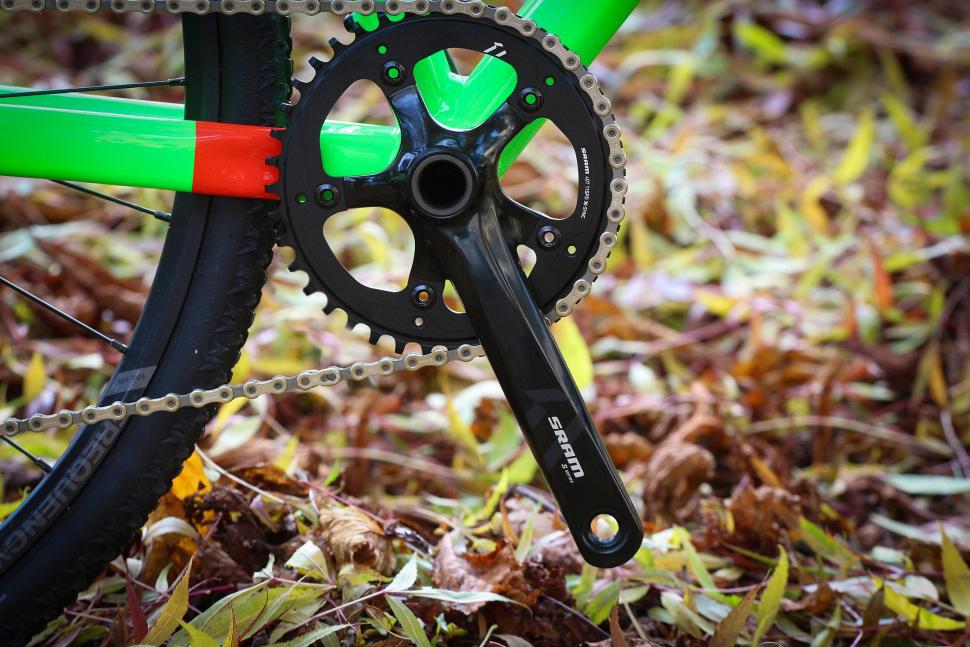
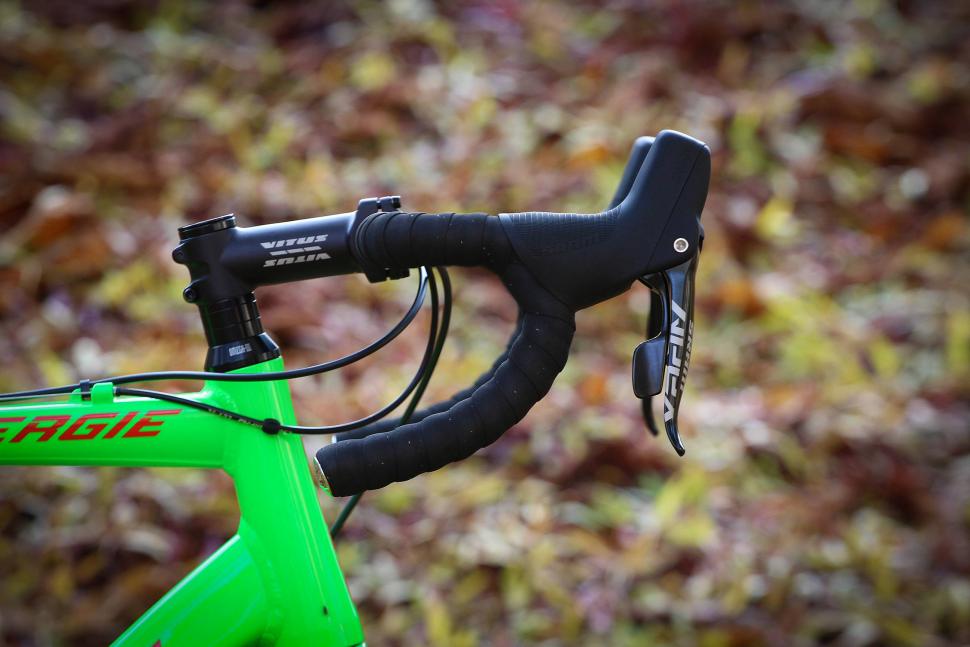

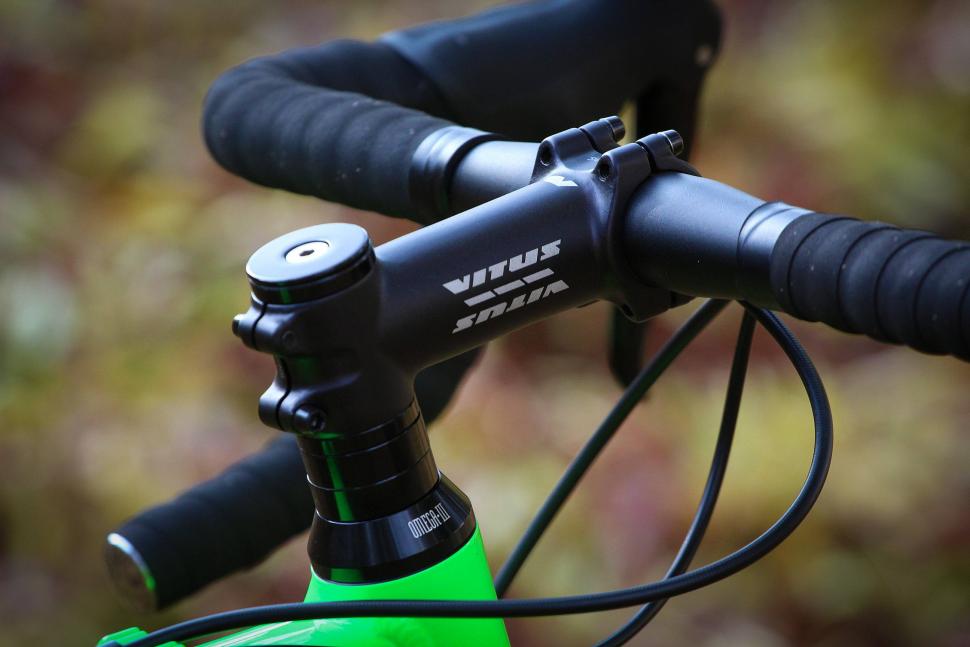
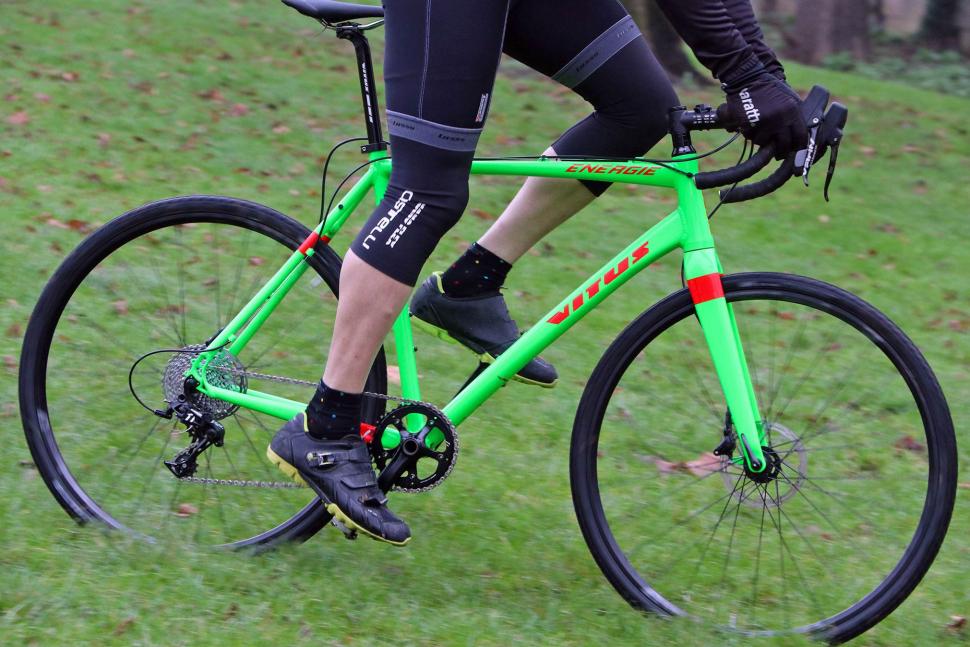
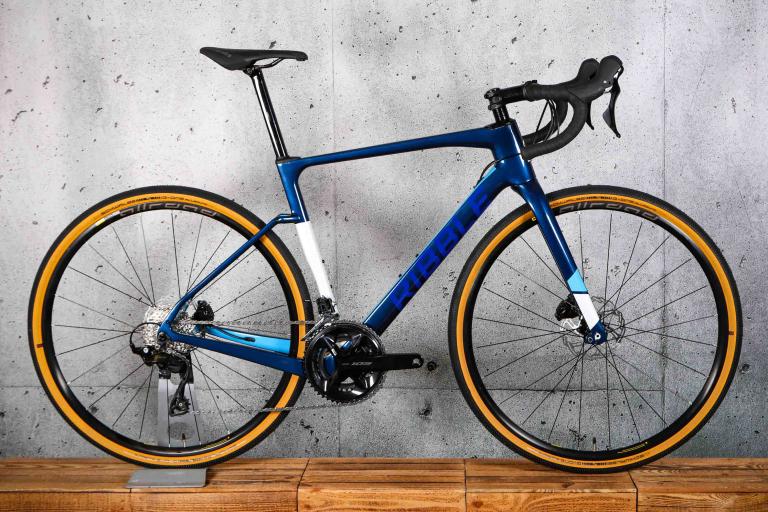
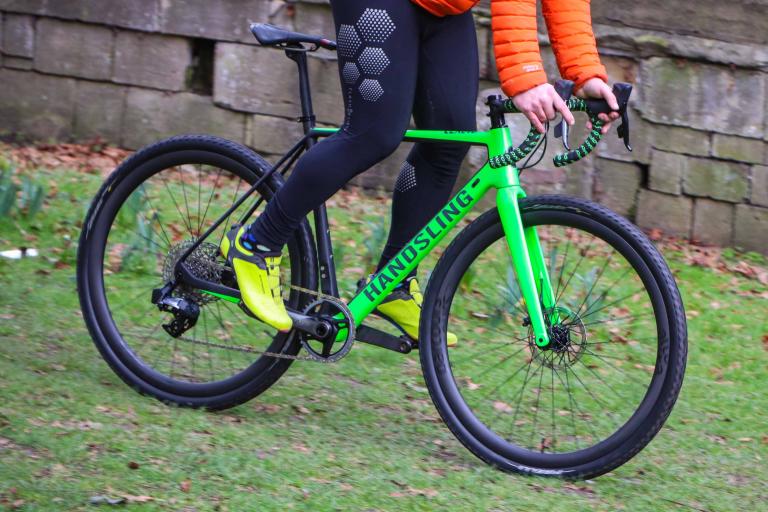

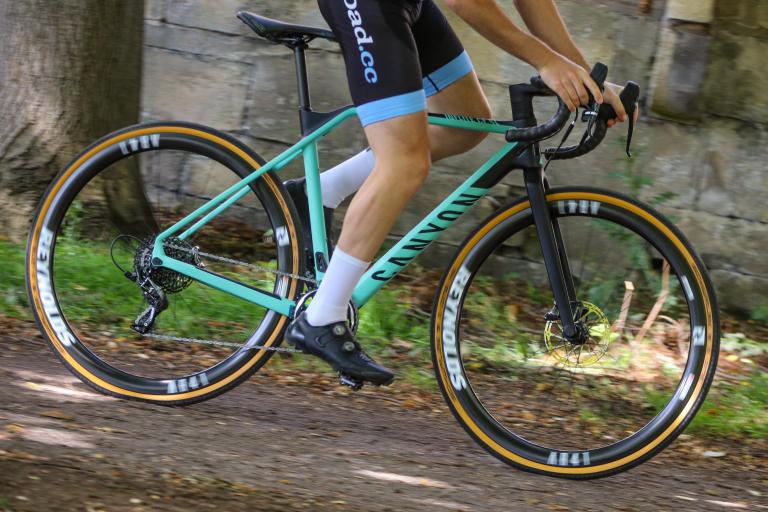
Add new comment
18 comments
It's a shame they didn't keep what I am assuming was "last years" model going with cable/mechanical discs so therefore offering a cheaper/baser model or if you prefer "entry" model.
That paintjob is like something from a 1990s Apollo!
actually the Boardman is £90 cheaper because you can get a BC discount on that too
The only thing this really has over the Boardman, is better tyres, as in faster for light off road conditions. Planet X were recently selling these tyres for £15 each. The CX Team obviously has a superior groupset, costs around £200 less and doesn't hve such hideous paintjob.
A no brainer, as the Americans would say.
The boardman is heavier, doesn't have tubeless-ready wheels and at £900 is the same price as the Vitus, give or take twenty quid to become a BC member if you're not one already. Rival's an upgrade on Apex for sure, but the difference between the two, if you're racing, is certainly not as noticeable as the difference between tubeless and non tubeless. The wide-ratio cassette on the Boardman will be helpful for general use but the Vitus has better ratios for racing. so it's not as cut and dried as you're suggesting. Depends what your priorities are.
But that's about entry level bikes, not entry level CX or CX race bikes.
Am I being a grumpy sod, yes.
But not having visited Roadcc frequently in the past year, I believe I detect a shift from a site that accepted that the £1,000 cycle to work scheme limit was the most the majority could aspire to spend on a bike. This understanding led to a differentiation between the cheaper bikes available whilst providing us with reviews of what might be affordable one day and outright exotica.
And Dave, yes we are quibbling about a couple of hundred quid. If that level of spend doesn't reflect the reality of many people's buying decisions, why does Roadcc persevere with reviews for the best road bike under £500, best £500 to £750 etc? Apparently I don't need to tell you the break points, as you wrote these articles.
Perhaps the fact that Mintel reported the average cost of a bike purchased by U.K. households in 2014 to be £233 puts my concern about a couple of hundred quid into perspective.
I suppose your editorial line reflects the audience you are aiming for, I simply observed that I think there's been a shift to the upper end and I speak as someone who spends a ridiculous amount on bikes.
The Promax are, to add, not good at all. I paid £849 for my CAADX at sale prices then added Juin Tech R1 brakes and, of course, swapped out the wheels. It's a great bike and, luckily, I already had those items knocking around. So for me, great. The Vitus is excellent. Even if you don't have BC discount it will still only cost you a few quid to get it and make that saving.
It may be the case that there's an entry point at which you don't care about spec because it's the de facto entry point on a price basis, but to ignore spec which makes something better and is only a £100 or so apart is madness.
That new Planet X alloy CX at £799 does look rather good but, for the spec, I'd still take the Vitus at £100 more.
FMOAB, you seem to have ignored bendertherobot's points though, in an effort to make your point.
The Caadx Sora 2017 is £849 - the Vitus is £899 with BC discount. The Vitus has a higher groupset spec as well as the hydro brakes. In fact the CaadX brakes are Promax which I believe have a moderate reputation and the wheels are heavy. For BC members, therefore, the price difference between a 2017 Caadx sora and a 2017 Vitus Energie is only £50, which is a premium well worth paying.
The fact that there may be some of last season's sales bikes still available in some sizes at a good price doesn't really affect the value of the Vitus - unless your general point is that bikes in the sales are cheaper than those at RRP?
What are we quibbling about? a couple of hundred quid? It's okay to be entry level at £700 but not £900? Where's the cut-off? Just so I know next time. £800? £750?
It's an entry level race bike. Yes. You can go CX racing on anything, and plenty of people on cheaper bikes than this beat me every time i show up of a sunday.
But if you're thinking, "What I want is a CX race bike" then I'd say this is entry level. Alloy frame, SRAM's cheapest 1x HRD groupset, ordinary finishing kit, decent but unexceptional wheels. But: for me this is a much, much better bike for racing on than either the CAADX Sora or the cheaper Ribble. CRC do a cheaper build of this bike, but I wouldn't call it a race bike. it's an all-rounder. I wouldn't call a Sora-equipped road bike an "entry-level race bike" either, although I have raced on one.
Is it bull to say that things that are inherently better are better? I don't think so, personally.
if you want to go CX racing then in my opinion:
1) hydraulic discs are inherently better than mechanical discs or callipers, even more so if you're not just using the bike for racing
2) a 1x groupset is inherently better than a 2x groupset
3) tubeless is inherently better than a tubed setup
You don't *have* to have any of those things. You can turn up on your singlespeed mountain bike or a £50 beater from the bike project if you want, and people do. That's one of the great things about 'cross. But if you're specifically looking to buy a bike to race on, this offers a huge amount for the money.
So, what entry level are we talking about, canti brakes? Or non hydro? The Cannondale before reductions (Sora) is £150 less. The Tiagra (which is equivalent to Apex arguably) £949. You could build your own PX for less or, go for a Tiagra version for £799. We're talking about the difference of a hundred quid if you use BC discount or wait till this is inevitably reduced.
That's my point exactly. If you care about hydro brakes it's entry level, but if you havent swallowed the bull of "must have the latest..." it isn't.
In my world, a 25% jump from £800 - £1,000 is a significant increase, £200 is (away from bikes) normally considered to be a reasonable sum of money. If you disagree, please send me as many bundles of £200 as you wish.
It's not far off entry level and it's certainly entry hydro level. Just because there are a few out there for a bit less doesn't alter that. The 2017 Sora CAADX is £849 not the sale price of the 2016. Factor in your 10% BC discount on the Vitus and this compares extremely favourably in value terms to any other CX.
C'mon Dave, "entry level", really?
I've always enjoyed your reviews and found them to be pretty grounded, but I think you've been seduced by the manufacturers giving you too many top end offerings if you think £1,000 is entry level.
Cyclocross racing is still fairly niche and the bikes are unlikely ever to be available for bargain basement prices, but right now you can get the Cannondale CAADX Sora for £680 from a nationwide retail chain, normal retail £800, Ribble - around £700 for their offering. Do they have all the whistles and bells the Vitus has, no, but that's because they are entry level.
Rant over, but reviews that contribute to an escalation in what is consideed "entry level" and which could put people off from participating on the lower price offerings should be called for what they are, which is snobbery.
Have you ridden the Boardman CX Team? If so, how do you think this compares? They both have nice looking frames and SRAM hydro 1x groupsets, so they seem fairly well matched on paper.
Seems very similar to a GT Grade with that slack head tube. Which is better?
It certainly looks a nice bike, and good value. My only reservation is that, from the photo, it doesn’t look like there is a lot of mud clearance in the tyre / seat stay / bridge?
i'd say that angle makes it look like it's tighter than it actually is. it's not class-leading in that regard but i've had no particular issues with it clogging, and with a 1x transmission there's less for the mud to get stuck on there